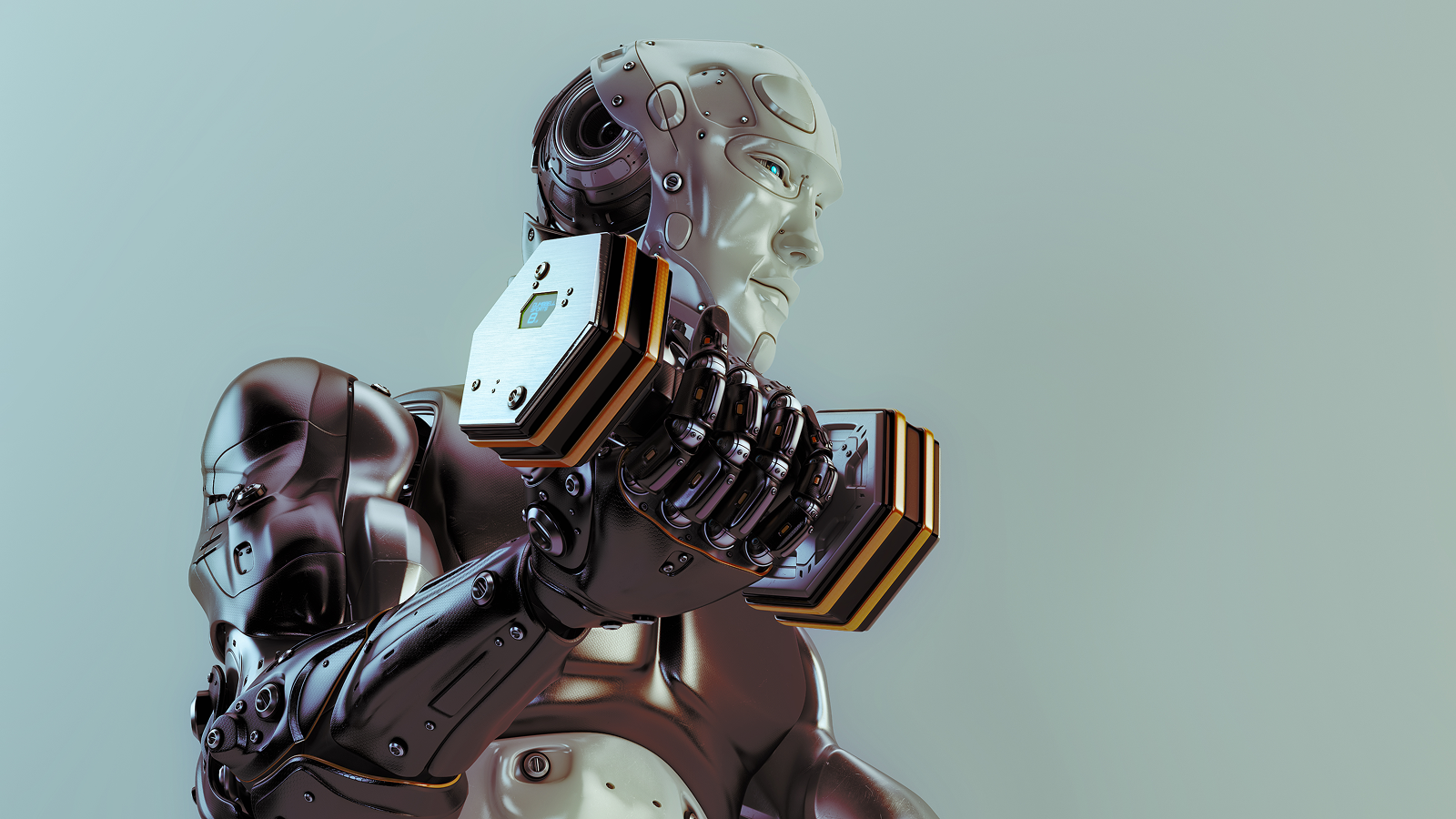Humanoid robots could lift 4,000 times their own weight thanks to breakthrough 'artificial muscle'
Researchers have developed a chemical structure for an artificial muscle that can lift up to 4,000 times its weight, and they say it could be used in future humanoid robots.

Researchers in South Korea have built an artificial muscle that can lift approximately 4,000 times its own weight. They say it can be used in future humanoid robots.
A key breakthrough with the muscle's design is its ability to be flexible or taut when needed, which is a first for this field of research. The scientists outlined their findings in a study published Sept. 7 in the journal Advanced Functional Materials.
"This research overcomes the fundamental limitation where traditional artificial muscles are either highly stretchable but weak or strong but stiff," lead study author Hoon Eui Jeong, a professor of mechanical engineering at the Ulsan National Institute of Science and Technology (UNIST), said in a statement. "Our composite material can do both, opening the door to more versatile soft robots, wearable devices, and intuitive human-machine interfaces."
Artificial muscles are often limited by an inability to be flexible or taut; they need to be stretchable while still offering enough energy output, or else their work densities are limited. But soft artificial muscles are believed to be transformative because they're lightweight, mechanically compliant, and capable of multidirectional actuation (movement).
When the researchers say "work density," they refer to how much energy per unit volume the muscle can deliver. Achieving high values alongside high stretchability is where the challenge lies for artificial muscles.
Do you even lift, robo?
The scientists described their artificial muscle as a "high-performance magnetic composite actuator," which means it's a complex chemical combination of polymers that link together to mimic the pull and release of muscles.
One of these polymers can have its level of stiffness altered and sits in a matrix that has magnetic microparticles on the surface that can also be controlled. This enables the muscle to be animated and controlled through the tunable stiffness, thus allowing it to be moved.
Get the world’s most fascinating discoveries delivered straight to your inbox.
The researchers' new design integrates two distinct cross-linking mechanisms. The first is a covalently bonded chemical network (two or more atoms that share electrons to achieve a more stable configuration) and a reversible, physically interacting network. The two mechanisms, developed in this way, provide the durability for the muscle to work long-term, the researchers said in the study.
The trade-off between stiffness and stretchability is effectively solved by a dual cross-linking architecture, and the physical network is further reinforced by incorporating a type of microparticle (NdFeB) on the surface of the muscle that can be given a function via a colorless liquid (octadecyltrichlorosilane). The particles are dispersed throughout the polymer matrix.
The composite muscle becomes stiff when bearing heavy loads and softens when it needs to contract. In its stiffened state, the artificial muscle, which weighs just 0.04 ounce (1.13 grams), can support up to 11 pounds (5 kilograms) — roughly 4,400 times its own weight.
A human muscle contracts at approximately 40% strain, but the synthetic muscle achieves a strain of 86.4% — over double that of the human muscle, the researchers said in the study. This enables a work density of 1,150 kilojoules per meter cubed — 30 times higher than human tissue is capable of.
The researchers used a uniaxial tensile test to measure the strength of their artificial muscle. A type of mechanical test that applies a pulling force to a subject until it fractures – the elongation is measured against the applied force to find its ultimate tensile strength.
You must confirm your public display name before commenting
Please logout and then login again, you will then be prompted to enter your display name.


